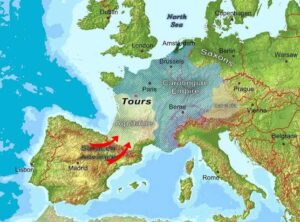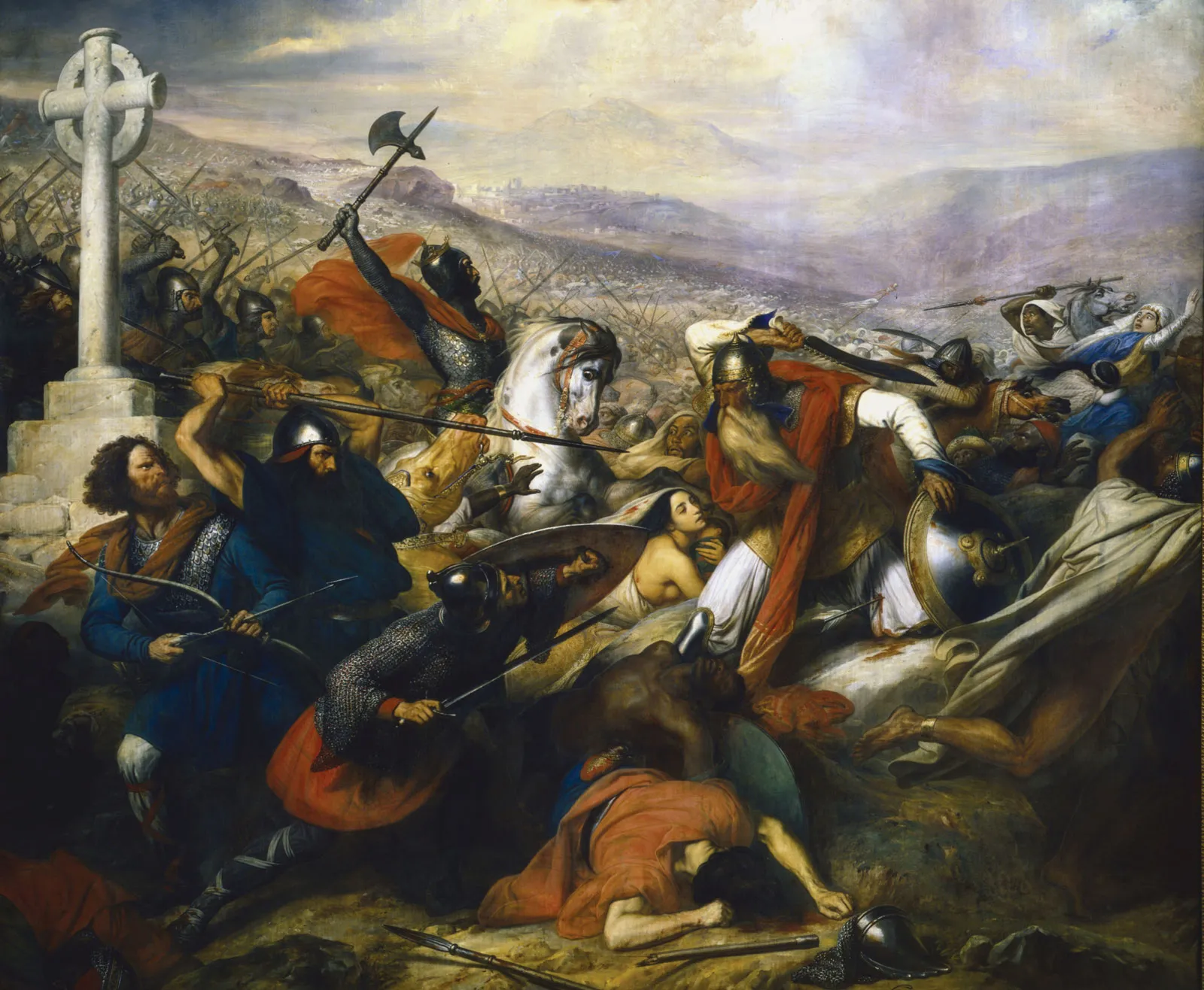Vaša košarica je trenutno prazna!
The Battle of Tours, often referred to as the Battle of Poitiers, stands as a cornerstone event in European history. Fought on October 10, 732 AD, near what is now Tours, France, this pivotal confrontation saw the Frankish and Aquitainian forces, led by the renowned Charles Martel, clash with an invading army of the Umayyad Caliphate, commanded by Abd al-Rahman al-Ghafiqi. The Umayyad expansion had been relentless, pushing through the Iberian Peninsula and deep into Gaul, with rich targets like the Shrine of St. Martin in Tours firmly in their sights.
Strategic Brilliance: Charles Martel’s Preparation

Prior to the battle, Charles Martel, a brilliant military tactician, meticulously selected the ground. He positioned his forces on elevated, wooded terrain, a strategic choice that effectively negated the formidable advantage of the Umayyad cavalry – their primary offensive weapon. The Frankish army, though primarily infantry, was well-disciplined and comprised of seasoned veterans. Martel masterfully formed a dense phalanx, a nearly impenetrable wall of shields and spears, designed to withstand the brutal charges of the Umayyad horsemen.In contrast, the Umayyad army, confident from a string of unbroken victories, relied heavily on its swift and destructive Arab and Berber cavalry. However, they lacked the rigid discipline and unified command of the Franks. Furthermore, their forces were burdened with a significant amount of plunder from their previous conquests, which impacted their speed and cohesion, a factor Martel likely exploited.
The Unyielding Stand: Frankish Resilience
The battle itself was a brutal, day-long engagement. The Umayyad cavalry launched repeated, furious charges against the Frankish lines. Yet, the Frankish phalanx held firm, an unyielding barrier that absorbed every冲击. Their disciplined formation and unwavering resolve demoralized the Umayyad attackers, who found their charges repeatedly broken against the “wall of ice” that was Martel’s infantry.
A critical turning point occurred when news of a potential looting of the Umayyad camp spread through their ranks. Many Umayyad soldiers, eager to protect their hard-won spoils, began to break formation and retreat. Seizing this opportunity, Charles Martel dispatched a small but effective force to flank the Umayyad camp, further exacerbating the panic and disarray among the invaders.
During this chaos, Abd al-Rahman al-Ghafiqi, attempting to rally his scattered troops, was killed in battle. His death was a devastating blow to the Umayyad command structure. Leaderless and disorganized, the remaining Umayyad forces fragmented and, under the cover of night, executed a full retreat.
A Defining Moment: Legacy and Impact

The following morning, the Franks discovered the complete withdrawal of the Umayyad army, leaving behind their dead and equipment. Though Charles Martel chose not to pursue, the victory was absolute and resounding.
The Battle of Tours holds immense and enduring historical significance. It is widely regarded as the decisive moment that halted the northward expansion of the Umayyad Caliphate into Western Europe, thereby preserving the existing cultural and religious landscape of the continent. This victory not only solidified the power and prestige of the nascent Frankish Kingdom but also laid the crucial groundwork for the future Carolingian dynasty and the eventual rise of Charlemagne. It remains a cornerstone event in the narrative of early medieval European history and a powerful testament to strategic military leadership.

